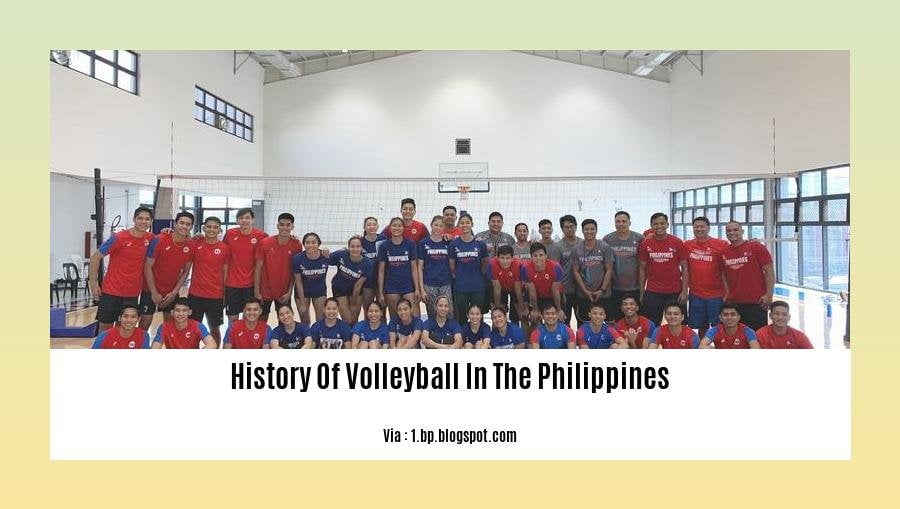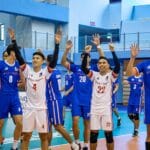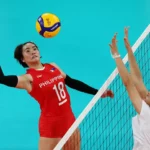Get ready for a wild ride through the history of volleyball in the Philippines! This incredible sport has been making Filipinos’ hearts race for ages, and it’s a huge part of our sports scene. We’ll dive into how it all started, including the awesome Filipino who came up with the famous “quick attack.” We’ll meet the people and organizations who have helped volleyball grow in the country, and see how our players have made a name for themselves worldwide. Get ready for an amazing journey through the ups and downs of Philippine volleyball, from its humble beginnings to the vibrant national pastime it is today. We’ll finish off by looking at the exciting challenges and possibilities that lie ahead, so hold on tight because the future of volleyball in the Philippines is bright!

History of Volleyball in the Philippines: A Memorable Journey
Get ready to dive into the fascinating world of volleyball in the Philippines! Volleyball, a sport that’s loved and celebrated nationwide, has a rich history that’s filled with innovations, international success stories, and a legacy that continues to inspire.
Humble Beginnings: Volleyball’s Footprint in the Philippines
It all started back in 1910 when Elwood S. Brown introduced volleyball to the Philippines through the YMCA in Manila. It quickly caught on like wildfire, and Filipinos wasted no time in putting their own unique spin on the game.
Filipino Innovations: Game-Changing Techniques
Volleyball in the Philippines wasn’t just a copycat sport; Filipinos came up with some game-changing techniques that revolutionized the way it was played:
- Three-hit Limit Rule: This rule limited teams to three hits on their side of the net, which made the game faster-paced and more exciting.
- “Bomba” Spike: Imagine a spike that’s like a bomb exploding on the court! That was the “bomba” spike, a powerful technique that made opponents tremble in their shoes.
International Success: Philippine Volleyball on the Global Stage
The Philippines made its mark on the international volleyball scene in the 1970s and 1980s. The men’s and women’s national teams were a force to be reckoned with, winning medals and making the country proud.
A National Pastime: Volleyball Fever in the Philippines
Today, volleyball is more than just a sport in the Philippines; it’s a national pastime. The games attract massive crowds, and the 2023 PVL Finals broke records with over 24,000 people cheering on their favorite teams.
Legacy and Impact: The Filipino Influence
Philippine volleyball has left an unforgettable footprint on the international stage. Filipino players and coaches have shared their unique style and techniques with the world, inspiring new generations of volleyball enthusiasts.
Key Facts:
| Fact | Description |
|---|---|
| Date of Introduction | 1910 |
| Origin | YMCA in Manila |
| Filipino Innovations | Three-hit Limit Rule, “Bomba” Spike |
| International Success | Medals in international tournaments |
| National Pastime | Massive crowds and high popularity |
| Legacy | Influenced volleyball worldwide |
So, there you have it! The history of volleyball in the Philippines is a rollercoaster ride of innovations, international achievements, and a national passion that continues to burn bright.
For more information about the humble beginnings of volleyball in the Philippines and the impact it had on the Filipino people, check out the facts about volleyball in the Philippines. Additionally, for a chronological account of significant events in the history of volleyball in the Philippines, refer to the detailed timeline of volleyball timeline.
Did you know that volleyball has a rich history in Sri Lanka? Delve into the history of volleyball in Sri Lanka to learn about its origins, growth, and achievements.

Understanding the Introduction of Volleyball to the Philippines and the Trailblazer Who Brought It to Our Shores
How Volleyball Came to the Philippines
Back in 1910, Elwood S. Brown, a man dedicated to physical fitness, arrived in the Philippines. He was a Physical Director with the YMCA and had a passion for sports. One of the games he brought with him was volleyball, and it quickly caught on with Filipinos eager to try something new.
Early Days of Volleyball in the Philippines
At first, volleyball wasn’t played exactly like it is today. Instead of using proper nets, Filipinos used trees, and they had their own unique style that set them apart from others who played the sport.
Spreading the Volleyball Spirit
The YMCA, the organization where Elwood Brown worked, organized the first volleyball tournament for schools in 1913. It was a huge success, and soon volleyball was being played all over the Philippines. By 1920, it had even made its way to the Far Eastern Games, a major sporting event in Asia.
Volleyball’s Rise to Popularity
Volleyball has always been a part of Philippine sports, but it really took off in the 1970s and 1980s. The national volleyball teams started winning tournaments internationally, which made the sport even more popular at home.
Key Points to Remember
- Elwood S. Brown, a YMCA Physical Director, introduced volleyball to the Philippines in 1910.
- Filipino volleyball players made two notable contributions to the sport: the three-hit limit rule and the “bomba” or “kill” spike.
- Philippine volleyball reached its peak in the 1970s and 1980s when the national teams achieved international success.
We hope you enjoyed this deeper dive into the introduction of volleyball in the Philippines. If you’re curious about the history of other sports in the country, be sure to check out our other articles!
What is the name of the volleyball technique invented by Filipinos?
Hey there, volleyball enthusiasts! Did you know that the Philippines has played a pivotal role in shaping the game we love? Let’s dive into the Filipino-inspired techniques that have revolutionized volleyball.
The Filipino Bomb, also known as the set and spike, is a dynamic offensive strategy that changed the game forever. Back in the early 1900s, Filipino players came up with this clever technique where one player elevates the ball into the air, creating an optimal setup for a powerful downward strike by a teammate. This explosive move has become a staple in modern volleyball.
But that’s not all! Filipinos also had a solution for playing volleyball in remote areas without proper courts. They ingeniously used trees as makeshift net holders. This simple yet brilliant innovation paved the way for volleyball to be enjoyed in any setting.
Philippines’ contributions to volleyball extend beyond these inventions. Filipino players have showcased their exceptional skills and inspired countless athletes over the years. Their legacy continues to motivate and ignite a passion for the game in generations to come.
Key Takeaways:
- Filipinos invented the “Filipino Bomb,” a game-changing offensive technique.
- Filipinos also came up with using trees as makeshift net holders, making volleyball accessible everywhere.
- Philippines has made a significant impact on the sport of volleyball and continues to inspire players worldwide.
So, there you have it! Next time you see those exciting set-and-spike plays or hear about the “Filipino Bomb,” remember the innovative Filipinos who brought this electrifying technique to the world.
What is the Significance of the Philippine Amateur Volleyball Association (PAVA) in the History of Volleyball in the Philippines?
Imagine a time when volleyball in the Philippines was just a game played casually. Then, along came the Philippine Amateur Volleyball Association (PAVA) in 1961, and everything changed.
PAVA was like a guiding light for volleyball in the Philippines. They set up the rules, organized tournaments, and gave volleyball enthusiasts a chance to shine. Not only that, but they also worked hand-in-hand with the Philippine Volleyball Federation (PVF) to create a training center for young volleyball stars.
This all meant one thing: volleyball in the Philippines went from being a casual pastime to a serious sport. Players got better, teams got stronger, and the Philippines started making a name for itself in international volleyball.
Fast forward to 2015, and PAVA evolved into the Philippine Volleyball Federation (PVF). Today, they’re still the main guys in charge of volleyball in the Philippines, making sure the sport continues to grow and inspire Filipinos everywhere.
Hold Up, Let’s Break It Down:
- PAVA set up the rules and organized tournaments, making volleyball more competitive.
- PAVA gave players a chance to show off their skills and represent the Philippines internationally.
- PAVA and PVF teamed up to train young volleyball stars.
- PAVA’s efforts helped volleyball in the Philippines become a major sport.
Fun Fact:
Did you know that PAVA helped create the Philippine Volleyball League (PVL)? It’s one of the top volleyball leagues in the Philippines today, giving players a chance to showcase their talents and bring excitement to volleyball fans.
FAQ
Q1: When was volleyball introduced to the Philippines and who brought it to the country?
A1: Volleyball was introduced to the Philippines in 1910 by Elwood S. Brown, the Physical Director of the YMCA.
Q2: What is the name of the volleyball technique invented by Filipinos?
A2: Filipinos invented the “bomba” or “kill” spike, which involves hitting the ball with great force and accuracy to score a point.
Q3: What is the significance of the Philippine Amateur Volleyball Association (PAVA) in the history of volleyball in the Philippines?
A3: PAVA standardized the rules of volleyball in the country, organized tournaments, and provided a platform for volleyball players to develop their skills.
Q4: How have Filipinos contributed to the development of volleyball as a professional and international game?
A4: Filipinos have contributed to the development of volleyball by inspiring the three-hit limit rule and introducing the “bomba” or “kill” spike technique, which have become integral parts of the modern game.
Q5: What are some of the challenges and opportunities facing volleyball in the Philippines today?
A5: Challenges facing volleyball in the Philippines include a lack of funding, limited access to training facilities, and the need for stronger grassroots development programs. Opportunities include the growing popularity of the sport, the success of the national teams in international competitions, and the emergence of new talents.
- Unlock 6000+ words beginning with he: A comprehensive analysis - April 20, 2025
- Mastering -al Words: A Complete Guide - April 20, 2025
- Master Scrabble: High-Scoring BAR Words Now - April 20, 2025
















